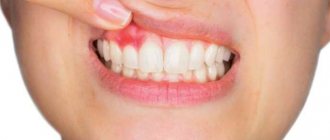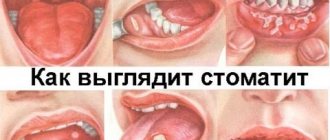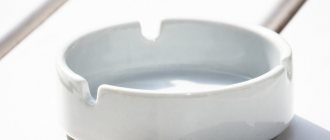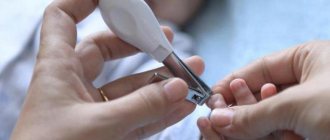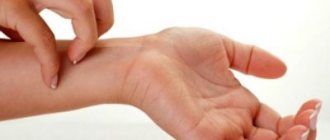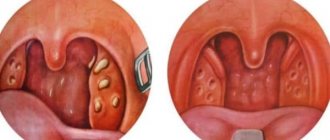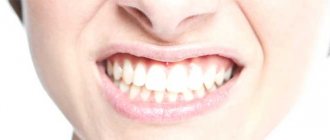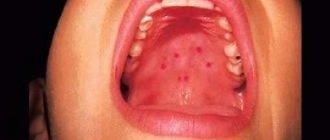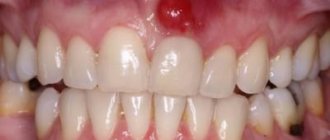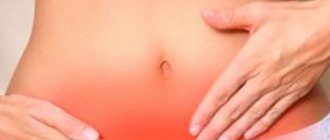Sometimes, when looking at your face in the mirror, you may notice tiny white bumps that don't look inflamed, but at the same time spoil the appearance of your skin by interfering with its smoothness. What causes the appearance of white bumps (or pimples in common parlance) on the skin and how to deal with it?
Milia are small, non-inflamed cysts that develop on the skin. These tiny bumps have very obvious white heads and develop when keratin becomes trapped just below the surface of the skin. Milia should not be confused with typical pimples, which are red or inflamed.
What do the white bumps in milia look like?
Those little white bumps on your face are not pimples. And, rather annoyingly, they don’t just disappear. These white bumps are another type of skin defect called milia.
Milia are white to yellowish in color, with hard, raised bumps on the skin. They look like a grain of sand stuck just under the surface of the skin. These white bumps are usually small, only about 1-2mm in diameter (although they can sometimes get larger).
Although milia can appear anywhere, they most often appear around the eyes, cheeks, nose, and forehead.
Milia does not hurt, and the pimples do not itch. Although whiteheads are annoying, they are completely harmless. One small white bump is called a milium. A group of such white lesions is called milia.
Login to the site
Everything related to pine cones is more than relevant for me now) Sister Melissa collected a whole bag of them for me, knowing how I lamented their absence last year. I found an idea that really interested me: bleaching buds in liquid household bleach or bleach. I’ll definitely try it one of these days and share my impressions) In the meantime, I suggest you look at a few ideas for using pine cones to decorate your autumn and winter interior. Below you will find two photos of a master class on creating New Year trees from pine cones. Enjoy watching)
Source
First I want to show you this fairy-tale house, I really liked it. The house is made of cardboard, with decoupage imitating wood, and the roofs of the pitched roofs are made of pine cones
And these pine cones are not bleached, but coated with gold spray paint. A very stylish option, suitable for any interior, under any furniture, it will look great both in the living room and in the office, even if you place it on top of a safe) By the way, you can buy a safe and any metal furniture in the PROmets store. Here you will find a wide range of safes, which are divided into several categories: burglar-resistant, fire-resistant, and so on. For your convenience, the online store website has a unique search system based on specified parameters, including: price, size, weight, lock type, key type, presence or absence of a cash drawer, warranty and manufacturer... Wow!)
But I will definitely make deer like this!
White cones have a more aesthetic appearance, but not as rich as the gold version. But... depending on the interior of the house
And this is what bleached buds look like, before and after. And also... it turns out that a closed cone can be placed in the oven, and it will open. I never thought about it...)
In order to bleach the pine cones, we need bleach or bleach. We dilute it with water in a 1:1 ratio, lower the cones for 5 hours, put something heavy on top of the cones so that they do not float up. It is best to bleach pine cones outdoors, not indoors. After bleaching, rinse the pine cones under water. If you want them to open, place them wet in the oven at 250 degrees. It will take several hours, depending on the buds.
We look at ideas for using pine cones to decorate the New Year's interior
Awesome deer) Super!
A beautiful Christmas tree made of cones, as you can see, burlap can also find its use)
A very tempting idea for me is to make a topiary out of pine cones! Stylish...
A Christmas tree made of cones is covered with silver varnish with sparkles, nail polish
Wreath of pine cones
Let's look at a photo master class on creating a Christmas tree from pine cones
And another master class on creating a Christmas tree like this:
Even more interesting information on the topic of crafts made from pine cones Lamp made from pine cones “Winter Bouquet”
Causes of white bumps on the skin
Milia develops when a plug of skin cells, or keratin, becomes trapped just below the surface of the skin. The white color you see is the keratin plug showing through a thin layer of skin. Milia occurs when the skin does not exfoliate or remove dead cells properly.
Milia is incredibly common. It can occur at any age, from newborn to old age. Some people are more prone to developing them than others.
The vast majority of whiteheads appear for no apparent reason. If you have pimples and blackheads, you probably also have milia. But white bumps can appear even if you don't have acne and your skin is otherwise relatively clear. This is completely normal.
Although milia are often lumped into the category of comedonal acne, they are not technically pimples. Acne comedones develop when the pores become blocked. Milia are tiny cysts that appear under the top layer of skin rather than inside the pore.
Milia tends to last much longer than a regular pimple. While most pimples naturally heal within a few days, milia can easily last for weeks or months.
Milia can also be caused by damage to the skin, such as sunburn, skin rashes, and the like. Some medications may also cause white bumps to appear, but this is very rare. Excessive sun exposure and sun damage also make the skin more prone to developing milia.
How to bleach pine cones white
There are many ways to bleach buds, but the most popular is bleaching. However, you need to be prepared for a long process right away, since the buds do not bleach the first time, and they are often so dirty and covered in resin that it will take a long time to turn them white.
Preparing buds for bleaching
In order for the cones to turn out beautiful and bleach well, you need to find beautiful, small cones and choose the cleanest ones. Such cones will be best suited to bleaching. To begin with, all the cones are cleaned well; in this process, the main thing is not to wet them, but to walk over a dry surface with a brush or brush. It is better to use a thin brush, since you will need to clean the cones between the scales, and they may be closed.
The main thing when choosing cones is to pay attention to their condition; they should be young, not rotten and as clean as possible. After all the cones have been cleaned, they need to be dried well; you can use a hairdryer for this, but it is better if they are left on the radiator all night. After drying, the scales will open well, and they can be cleaned again to get rid of any remaining sand.
How to clean resin from pine cones
So, for bleaching you will need a large can, drain cleaner and 3-4 bottles of bleach. Before bleaching the cones, they must be cleared of resin. A pipe cleaner is suitable for this, as the alkali will corrode the resin. Clean buds should be placed in a jar and filled with pipe cleaning solution, the ratio of which is 1:1 with water. By leaving the buds in the solution overnight, in the morning you can see that they have noticeably brightened and the resin particles have been removed. The solution needs to be drained, and the cones should be sent back to dry on the radiator.
How to bleach pine cones: the white stage
Next, the cones are placed in a jar and filled with white, it does not need to be diluted with water, so just fill it with white and shake the jar several times for 15 minutes. For health safety, the jar of whiteness should be stored outside, the main thing is that the temperature should not be below 10 degrees Celsius. After a while, you can see that the cones in the white have closed again, and they again have to stand overnight in the jar. In this case, the cones themselves go to the bottom, as they absorb moisture; they do not need to be pressed with anything.
In the morning, the cones are taken out and sent to the battery until they open. Then they are filled with white again. In principle, the entire result depends on the amount of time and patience of a person; many procedures for bleaching cones can be done until the desired result is achieved. Every day you need to change the whiteness and dry the buds until they turn white. This method will bleach pine cones very well, since they have large scales. Fir cones are easier to bleach because they are cleaner, but their scales do not reveal well, so you will have to work hard to achieve complete whiteness.
Diagnosis and treatment of white bumps on the skin
But there are other problems that cause small white bumps on the skin. If you're not sure what these bumps are on your skin, or if you just need help treating your milia, call your doctor. Most of these white bumps will go away on their own. But they can take a long time to go away without treatment—months to years.
If you don't want to wait that long, there are ways to treat milia. Products that speed up cell turnover, such as retinoids or glycolic acid, can help prevent and treat existing white bumps. Another option is to entrust the treatment of white bumps on the face to professionals. It is a simple process and gives immediate results. Seek advice from a dermatologist to find out how best to treat milia.
